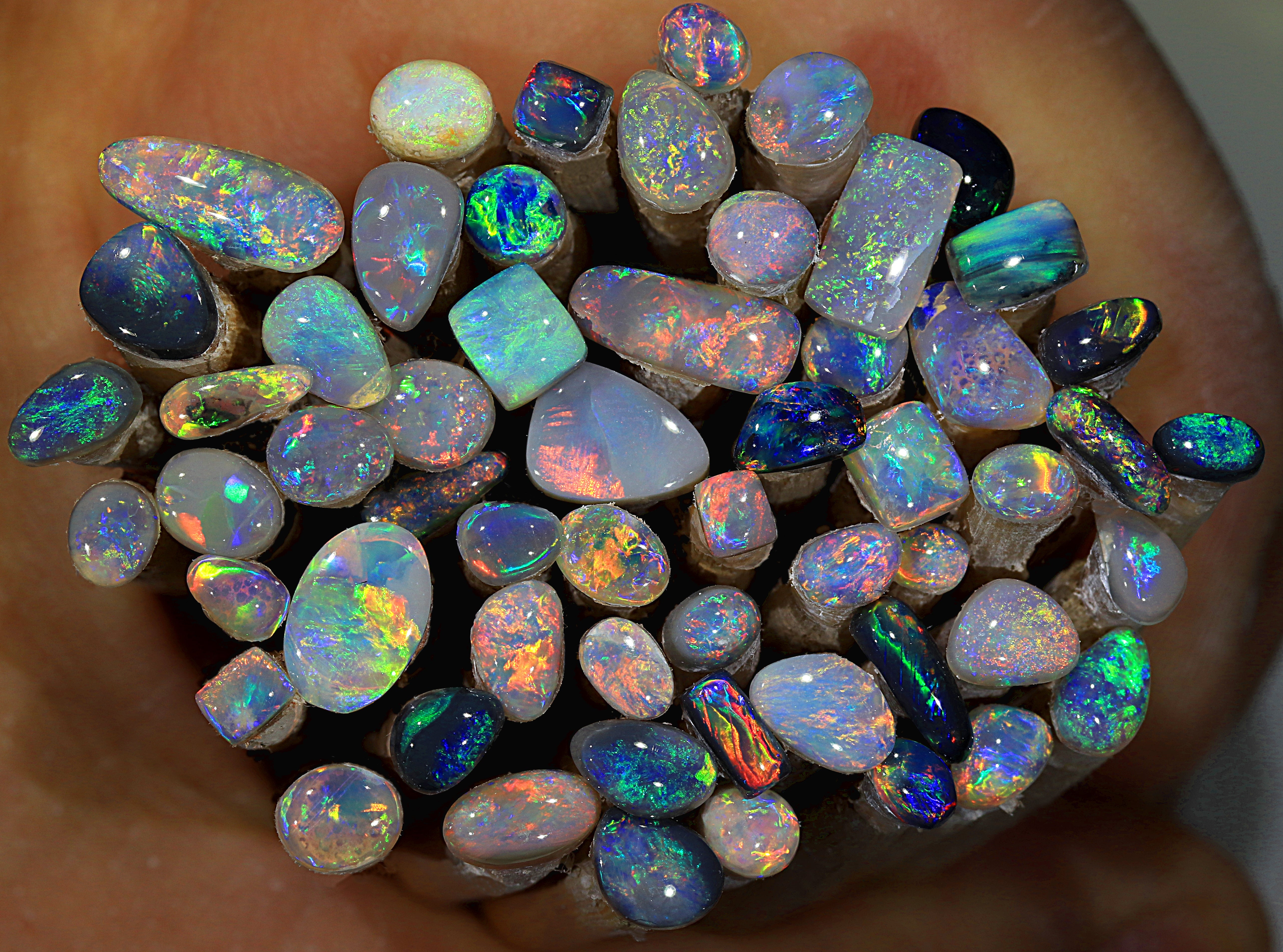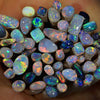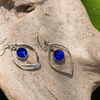Opal Finishes

Opal Finishes
Opal finishes refers to the process of cutting, shaping, and polishing an opal to enhance its natural beauty and prepare it for use in jewelry or as a collector's piece. The finishing process is crucial in revealing the opal's unique play of color and ensuring its appeal. Here are the key steps and types of finishings applied to opals:
- Rough Cutting or Pre-Forming: This initial step involves removing the excess material and deciding on the basic shape of the opal. The goal is to maximize the color play while minimizing the loss of precious material.
- Dopping: The opal is temporarily adhered to a stick (dop stick) using dop wax or glue. This provides a handle for the cutter to hold, offering better control during the cutting and shaping process.
- Cutting and Shaping: Using grinding wheels, the opal cutter shapes the opal. This process determines the final shape of the stone, such as oval, round, teardrop, or freeform. The cutter works to expose the best color play while considering the stone's symmetry and proportions.
- Sanding: After the basic shape is achieved, the opal goes through various grades of sanding to smooth the surface. This step is crucial for removing any scratches or imperfections from the cutting process.
- Polishing: The final step involves polishing the opal to a high shine. Polishing compounds, typically a mixture of water and cerium oxide, are used on a soft polishing wheel. This step highlights the opal's color play and gives it a glossy, attractive finish.
- Cabochon Finish: Most opals are finished as cabochons, a smooth, rounded form that is not faceted. The cabochon finish maximizes the opal's unique color properties. The dome shape of a cabochon can enhance the color play and depth of the stone.
- Faceted Finish: Although less common, some opals may be faceted, similar to diamonds or other gemstones. This is more typical for transparent or fire opals, where the faceting can enhance the brilliance and sparkle.
- Carving: Some opals are suitable for carving intricate designs. This is a specialized skill that can create unique and artistic pieces, often used in designer jewelry or as collector's items.
The finishing of an opal is a delicate and skillful process that can significantly impact the stone's value and appeal. A well-finished opal will display a vibrant play of color and a smooth, appealing surface, making it a cherished piece for any jewelry or gemstone enthusiast.
Opal doublets
Creating an opal doublet is a process that combines a thin slice of precious opal with a backing material to enhance its appearance and stability. This process is often used when the opal is too thin to be used alone in jewelry. Here's a step-by-step overview of how an opal doublet is made:
- Selection of Precious Opal: The process begins with selecting a thin slice of precious opal. This slice is often too fragile or thin to be used as a solid gemstone in jewelry. The chosen opal slice is usually vibrant and colorful, with a good play of color.
- Preparing the Backing Material: A backing material, commonly made from dark substances like black potch (common opal), ironstone, or sometimes black glass or plastic, is prepared. The backing material is chosen to provide contrast and support to the thin opal slice. A darker backing enhances the opal’s color play, making it appear more vibrant.
- Cutting and Shaping the Opal: The opal slice is carefully cut and shaped to fit perfectly onto the backing material. This step requires precision to ensure that the final piece is aesthetically pleasing and correctly proportioned.
- Adhering the Opal to the Backing: The opal slice is then glued to the backing material using a strong adhesive, often an epoxy resin. This adhesive must be applied evenly and carefully to avoid bubbles or gaps that could affect the appearance or durability of the doublet.
- Curing and Drying: After the opal slice and backing are bonded together, the piece is left to cure and dry. This ensures the adhesive sets properly, forming a strong bond between the two layers.
- Final Shaping and Polishing: Once the adhesive is fully cured, the doublet is shaped and polished. The opal cutter shapes the doublet into a desired form (often a cabochon) and then polishes it to enhance the opal’s natural beauty and color display.
- Inspection: The final step involves a thorough inspection of the doublet. The cutter checks for any imperfections, ensures that the bond between the opal and the backing is secure, and verifies that the color play and overall appearance meet the desired standards.
Opal doublets offer an affordable alternative to solid opals while still showcasing the opal's dazzling colors and patterns. They are popular in various types of jewelry, providing the beauty of opal at a more accessible price point.
Opal triplets
We focus exclusively on selling solid opals and doublets, as we aim to uphold the integrity and quality of our products. Our decision not to deal in triplets stems from the fact that they often contain a minimal amount of natural opal. Additionally, there's a prevalent use of synthetic or lab-created opals in making triplets. Our commitment to the opal industry and to our customers is to provide high-quality, authentic pieces. By concentrating on solid opals and doublets, we ensure that we're offering genuine, top-grade opal products that reflect our dedication to excellence in the field.



